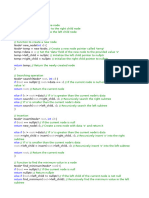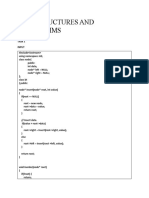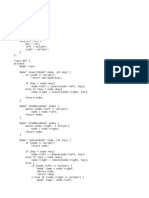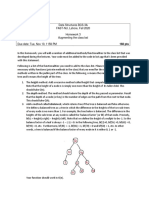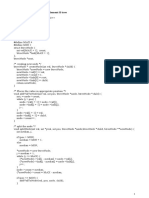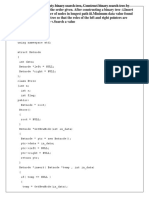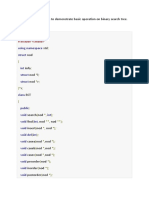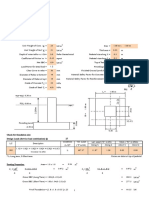0% found this document useful (0 votes)
20 views11 pagesBinary Search Tree
The document describes the insertion and deletion processes for a Binary Search Tree (BST) using both recursive and iterative approaches. It outlines the steps for inserting a node, deleting a node based on three cases (no children, one child, two children), and finding the minimum and maximum values in a BST. Additionally, it includes a method to find the k-th smallest element in the BST using in-order traversal.
Uploaded by
kji.cseCopyright
© © All Rights Reserved
We take content rights seriously. If you suspect this is your content, claim it here.
Available Formats
Download as PDF, TXT or read online on Scribd
0% found this document useful (0 votes)
20 views11 pagesBinary Search Tree
The document describes the insertion and deletion processes for a Binary Search Tree (BST) using both recursive and iterative approaches. It outlines the steps for inserting a node, deleting a node based on three cases (no children, one child, two children), and finding the minimum and maximum values in a BST. Additionally, it includes a method to find the k-th smallest element in the BST using in-order traversal.
Uploaded by
kji.cseCopyright
© © All Rights Reserved
We take content rights seriously. If you suspect this is your content, claim it here.
Available Formats
Download as PDF, TXT or read online on Scribd
/ 11














